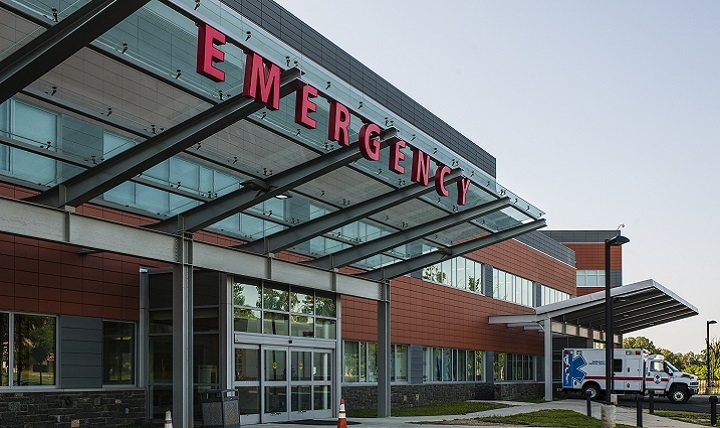As we face a coronavirus-induced health and economic crisis of uncertain duration, policy makers should be particularly concerned about private equity’s heightened use of debt to buy out healthcare providers and take them private, with no regulatory oversight.
Private equity firms have become major players in the healthcare industry—with investments reaching 855 deals and $100 billion in capital in 2018 alone—an historic high. Why has private equity accelerated its investments in healthcare in recent years? How can PE firms deliver their promised ‘outsized returns’ to investors on the backs of sick patients? We examine these questions in our new INET study, Private Equity in Healthcare: Who Wins, Who Loses?
Policy makers should take note of private equity’s heightened role in healthcare as the country hotly debates the financial model of an industry that represents 18 percent of GDP and rising. In 2018, healthcare prices continued to rise, with Americans spending $3.65 trillion on healthcare—4.6 percent more than in 2017—due to higher prices, not more visits to doctors or hospitals. Private equity firms and their deals lack transparency and accountability because they are almost completely unregulated under state or federal law.
As we face a coronavirus-induced health and economic crisis of uncertain duration, policy makers should be particularly concerned about private equity’s heightened use of debt to buy out healthcare providers and take them private, with no regulatory oversight. After the 2008 crisis, highly leveraged companies, whether publicly- or privately-owned, faced serious financial distress. And a disproportionate percentage of private equity owned companies went bankrupt compared to other comparable publicly-owned companies.[i]
In 2018, the median or typical debt leveraged in a PE healthcare buyout rose to 7x EBITDA (earnings before interest, taxes, depreciation, and amortization). This equals the highpoint of debt used in the 2006 bubble year—which led to high levels of financial distress and bankruptcy. The Covid-19 crisis is already taxing the US healthcare system; debt-induced financial instability will exacerbate the crisis. Note that if private-equity owned providers go bankrupt employees, patients, investors, and creditors lose, but PE general partners walk away because the debt is leveraged on the provider and PE partners typically invest less than 1-2 percent of the total purchase price.
In this context, how should government regulate private equity firms and other financial intermediaries that have penetrated healthcare markets for services so central to people’s ability to live healthy lives?
Interest in private equity’s role in healthcare exploded in 2019 when investigations revealed that two large private equity owned staffing firms—with a 30 percent share of the market for outsourced emergency room doctors—were at the heart of the surprise medical billing crisis. Patients who thought their insurance would cover their ER visit found instead that, in outsourced ER rooms, doctors could charge out-of-network rates, leaving patients with huge medical bills. Congressional debate over legislation to curb these abuses stalemated in early 2020 as private equity firms poured millions to lobby Congress to adopt watered-down legislation that would not substantially alter out-of-network rates.[ii]
The coronavirus crisis raises even greater concerns over whether physician staffing firms and other outsourced healthcare services will continue to charge Covid-19 patients, who can least afford it, outrageous out-of-network fees.
We argue in this study that the classic private equity business model—of extracting value in a short time frame in order to meet interest payments on the high levels of debt typical of private equity buyouts and to deliver ‘outsized returns’ to investors—is rarely consistent with building a sustainable healthcare system for high quality patient care. Increasingly, medical professionals are also beginning to worry about losing control of decision-making and professional autonomy if they contract with private equity firms to manage their practices. PE’s focus on generating cash flow and exiting the investment in a five-year window puts pressure on doctors to increase volumes of patients seen per day, to overprescribe diagnostic tests or perform unnecessary procedures, or to save on costs by using shoddier but less costly supplies and devices.
We also document the dramatic rise of private equity investment in healthcare, which has grown exponentially since 2000, and accelerated since 2010. Taking into account all types of healthcare deals (LBOs, add-ons, growth investments, secondary buyouts), PE capital invested in healthcare grew from less than $5 billion per year in 2000 to $100 billion in 2018 – a 20-fold increase. Cumulatively, PE firms closed roughly 7,300 ‘deals’ totaling $833 billion since 2000, with 70 percent of these investments occurring since 2010. In 2018 alone, PE investments in healthcare reached an historic high—at 855 deals and $100 billion in capital invested that year.
We also examine how PE firms have used the classic leveraged buyout (LBO) model to buyout many small service providers and roll them up into national powerhouses with greater negotiating power vis-a-vis insurance companies, medical supply companies, and local healthcare systems. We particularly focus on four segments where PE firms have been active: hospitals, outpatient care (urgent care and ambulatory surgery centers), physician staffing and emergency room services, and revenue cycle management (bill collecting).
In each of these segments, private equity has spurred consolidation, raising the possibility, as Nobel Prize winning economist Joseph Stiglitz put it recently, that their goal is to “take advantage of others through market power, through individual vulnerabilities, and through inside or unequal information.”[iii]
The salient findings in this study include the following:
The Private Equity Business Model
· Private equity firm investments in healthcare are largely short-term financial transactions – designed to make ‘outsized returns’ for themselves and their limited partner investors in a three to five year window. The primary business model is the leveraged buyout, in which PE buys out a healthcare enterprise, loads it with substantial debt that the enterprise must repay, and attempts to exit the investment in a three-five year window. The median, or typical, ‘hold time’ for a PE investment in healthcare was 4.6 years in the 2012-2015 period and 4.9 years in 2016-2019.
· Private equity’s current interest in healthcare is driven by market opportunities to consolidate enterprises in highly fragmented markets. PE serves as a market aggregator and reseller, using a well-developed ‘buy and build’ strategy. It establishes a ‘platform’ by buying out one enterprise and then adding on and rolling up a series of similar enterprises — consolidating them to achieve economies of scale and market power at the local, regional, or national level. It then exits the business via an IPO, a resale to a ‘strategic’ buyer, such as a hospital or insurance company, or a resale to another private equity firm, referred to as a secondary buyout. Since 2013, 35 percent of PE capital was invested in leveraged buyouts of one enterprise, 23 percent in secondary leveraged buyouts, and 35 percent in ‘add-ons’ to these buyouts. Comparing the number of deals executed by type of investment, almost three times as many deals were completed as add-on LBOs versus single LBOs.
· The buy-and-build strategy is an effective way to build market power without falling under the scrutiny of government antitrust agencies because each acquisition is too small to fall under the jurisdiction of the Federal Trade Commission. The median deal size of PE leveraged buyouts in healthcare is in the range of $60-70 million – smaller than deals in other industries.
· Private equity firms move in and out of healthcare markets – targeting the most lucrative market segments (e.g. outpatient care) or sub-segments (e.g. ambulatory surgery), cream skimming the ‘best targets,’ reselling them, and moving on to the next most attractive market. Private equity firms actively engaged in hospital buyouts in the 2000s through 2012, but found they could not make sufficient returns in this segment and moved on. Over the last decade, they shifted their investments to other lucrative niches – including health IT, outpatient care, ambulatory surgery services, anesthesiology, laboratory practices, emergency room management, burn units, trauma units, and radiology. More recently, PE firms have moved into additional physician specialties – dermatology, dental practice management, case management, ophthalmology, and orthopedics – as well as behavioral health. They are also active in ‘revenue cycle management’ or bill collecting.
· The private equity model in healthcare is one of low risk, as third party government and private insurers guarantee payments. It is one of high returns due to the extensive use of debt. In 2018, the median or typical debt leveraged in a PE healthcare buyout was 7X EBITDA (earnings before interest, taxes, depreciation, and amortization) – about equal to its highpoint in the 2006 bubble year.
· Private equity faces increasing competition in buying up outpatient, physician specialties, and other provider services as hospitals and payer organizations have realized the importance of building out their own vertically integrated inpatient and outpatient healthcare systems. As a result, the total price of buyout targets in 2018 increased to an historic high of 15.8X EBITDA—considerably higher than the PE economy-wide average of 11.5X EBITDA in that year. The high prices raise questions about the viability of the PE model in healthcare to exit these investments and achieve outsized returns in the future.
· Given private equity’s business model and on-going activity in healthcare, many medical professionals and their associations are expressing concern and hotly debating the pros and cons of PE buyouts—whether doctors lose control of decision-making or whether excessive debt and cost pressures push doctors to increase patient volumes to reduce costs, or increase unnecessary procedures to expand revenues.
PE Health Care Industry Trends
· Taking into consideration all types of healthcare deals (LBOs, add-ons, growth investments, secondary buyouts), private equity firms have closed roughly 7,300 ‘deals’ in healthcare totaling $833 billion since 2000. Investment activity particularly accelerated after passage of the Affordable Care Act in 2010, with 70 percent of all PE investments occurring since then. PE capital invested in healthcare grew from less than $5 billion per year in 2000 to $100 billion in 2018—a 20-fold increase.
· In 2018 alone, PE investments in healthcare reached an historic high — at 855 deals and $100 billion in capital invested that year.
· Membership in the PE industry association—the Healthcare Private Equity Association (HCPEA)—grew from 40 members in 2010 with investments in 500 companies to 74 members in 2019 with investments in 1,500 healthcare businesses.
· While mergers and acquisitions have grown substantially in the healthcare industry overall, the number of private equity M&As has grown at four times the rate of non-PE M&As. By 2019, private equity mergers and acquisitions represented 45 percent of all M&As in this sector.
Developments in Selected Healthcare Segments and Sub-segments
Between 2013 and 2019, 8 percent of PE investments were in the hospital segment of the industry compared to 30 percent in the outpatient services segment, with an additional 9 percent in ‘other healthcare services’ that include small physician specialty practices. PE firms also invested substantially in the following segments: healthcare technology systems (17 percent of all investments in 2013-2019), devices and supplies (17 percent), and pharma and biotech (15 percent).
Hospital Systems
· In the hospital segment, private equity firms used the highly leveraged debt model to buy out hospitals in the 2000s. By 2011, they owned 7 of the top for-profit chains, while the largest formerly- PE owned chain, HCA, continued to have 75 percent PE ownership. While HCA provided an example of a successful IPO, many others failed to achieve anticipated returns. After going on buyout sprees that led to huge debt encumbrances on healthcare systems, PE firms turned around and sold off assets in an attempt to forestall bankruptcies.
· The sagas of Community Health Systems (CHS), Quorum, Steward Health Care System, and IASIS Health Care most vividly illustrate what has become of the hospitals acquired by private equity in the 2000s—and what that has meant for the stability of health care markets and the community’s access to acute care services. The hospital chains’ faced major challenges in meeting loan obligations accumulated through LBOs of add-on acquisitions; and local health markets experienced instability caused by the pressure of high levels of debt in these national hospital systems and by the imperative to earn high returns for investors.
Outpatient Care, Urgent Care, and Ambulatory Surgery
· Private equity has invested substantially in outpatient care and ambulatory surgery services since 2010. While the proportion of healthcare workers employed in outpatient clinics is less than 10 percent of those employed in hospitals, their numbers grew at six times the rate of hospitals from 2005 to 2015 (albeit from a very low base), and numbered some 738,000 in 2015.
· Cumulatively, private equity has bought out 2,500 clinics and other small healthcare services in the last 20 years for a total of $158.5 billion. They particularly increased their investments from 2010 on: 81 percent have occurred since then. The next largest competitor group buying up outpatient clinics was hospitals, which accounted for the overwhelming majority of the remaining deals.
· Private equity’s strategy in outpatient care is similar to its approach in other healthcare segments. As a market intermediary, private equity is an aggregator and reseller, using a well-worn formula for consolidating and flipping entities in a low risk, high reward model. As competition gets tight in one segment or sub-segment, private equity moves on—prospecting for the next gold mine.
· In the urgent care sub-segment, two private-equity owned hospitals systems—Tenet and HCA—were the pioneers in buying up clinics and integrating them into their sprawling healthcare systems via mergers and acquisitions.
· Private equity firms with investments in urgent care between 2010 and 2018 were largely able to exit their investments within 3 to 6 years. But increasingly they are having difficulty exiting: In 2019, roughly 20 large PE-backed roll-ups in urgent care were nearing the end of their investment cycles and finding it difficult to exit their investments.
· Competition to buy up outpatient care centers in general has increased in recent years, as payers and providers seek to integrate them into their healthcare networks. This has allowed some PE firms to exit their investments by selling to these strategic actors.
· Ambulatory surgery centers (ACS) are a specialized niche or sub-segment in the outpatient segment that also experienced considerable growth in recent years. This sub-segment is also characterized by small fragmented, independent companies not affiliated with a hospital or health care system, which account for almost two-thirds (64 percent) of the market.
· Private equity firms took the lead in building out national chains of freestanding ambulatory surgical care centers. As of 2015, the two largest independent companies were both owned by private equity—Ambulatory Surgical Centers of America (AmSurg, owned by Kohlberg, Kravis, and Roberts) and United Surgical Partners International (USPI) (owned by Welsh, Carson, Anderson, & Stowe).
Physician Staffing Firms, Emergency Room Management, and Surprise Medical Billing
· Surprise medical bills from emergency room (ER) visits and ambulance services have become a major concern in recent years. Patients who go to the ER believe that their insurance will cover the costs for ER services in the hospital that accepts their insurance; but they often later find that the ER doctors bill them directly because, in fact, the hospital has outsourced the ER to a physician staffing company that is not covered by their insurance.
· In fact, the leading national physician staffing firms responsible for surprise medical bills are owned by private equity firms: Envision Healthcare (with 69,000 employees), owned by KKR, and TeamHealth (with 20,000 employees), owned by Blackstone. Together these two companies own 30 percent of the ER outsourced market. These national chains of ER specialists are the result of PE’s strategy of buying up small specialty practices and rolling them into national chains with substantial market power.
· Air and ground ambulances also have been a major source of surprise medical billing. The average cost for an air ambulance was over $36,000 in 2018, and 69 percent of bills were out-of-network—meaning that insured patients, in these cases, were billed directly for the services.
· Private equity owned companies dominate this sub-segment of healthcare. Two of the three largest ambulance transport companies are owned by private equity firms. KKR merged American Medical Resources (AMR) and Air Medical Group Holdings (AMGH) to create the largest provider of ground services and one of the largest for air transport services. Air Methods, also owned by private equity, reports that it accounts for nearly 30 percent of total air ambulance revenue in the US.
· In 2019, Congressional committees introduced legislation to curb surprise medical bills, but remained stalemated over specific provisions. Some legislators favor the adoption of a cap on out-of-network bills based on local in-network rates. Others insist that any capped payment be subject to arbitration so that out-of-network doctors can challenge the amount paid. Critics worry that this will lead to increases in healthcare costs and provide incentives for in-network doctors to go out-of-network to earn more. Private equity firms and other physician specialty associations have lobbied fiercely against a strict cap, while insurance companies favor it.
· Pending legislation has led financial analysts to re-evaluate the value of debt ladened Envision Healthcare, owned by KKR. The value of Envision’s debt fell from 97 cents on the dollar in May, 2019 to 73 cents on the dollar in August, 2019.
Collecting Medical Debt: Revenue Cycle Management (RCM)
· Private equity firms also have bought up and rolled up revenue cycle management companies—those responsible for hounding patients to pay their bills—including those accumulated as a result of the surprise medical billing by PE owned ER staffing companies. Medical debt is a major contributor to almost 60 percent of personal bankruptcies, and has grown in recent years due in part to increased deductibles in health insurance plans.
· Hospital uncompensated care and unreimbursed care has grown at about 3 percent since 2015, and they have responded by increasingly outsourcing bill collection to third party vendors with more efficient and updated IT systems and automated billing. Hospital demand for RCM outsourcing jumped 86 percent between 2015 and 2018.
· RCM is an attractive market for private equity because many firms have already invested in health IT, and extending IT innovations to the RCM segment is relatively straightforward.
· Early leaders in RCM innovation in the 2000s included PE owned hospital systems: Parallon, a subsidiary at HCA, and Conifer Health Solutions at Tenet Healthcare. More recently, PE firms have developed platforms to acquire a series of small RCM companies and roll them into national chains providing ‘one-stop shopping’ for a range of RCM activities; but to date, few have accomplished this goal and most hospital systems use more than one vendor.
· PE firms active in this segment include Blackstone, The Gores Group, Thomas H. Partners, Vista Equity, Waud Capital Partners, and Warburg Pincus, among others.
· The largest RCM company is Parallon, with 16,500 full time employees and 3,926 contracts. nThrive (Pamplona Capital) is second with 3,048 full time employees and 1,565 total contracts. The next largest 18 companies have just 100 to 1,500 contracts each.
· RCM companies are under scrutiny by the Federal Communications Commission (FCC) for aggressive tactics. Complaints to the FCC have increased; and lawsuits claiming violations of the Telephone Consumer Protection Act (TCPA) by RCM and other bill collections companies increased by 560 percent between 2010 and 2014.
· In August 2015, the FCC ruled that the decades-old Telephone Consumer Protection Act (TCPA) applies to calls by bill collectors to cell phones, and not just landlines – clarifying that debt collectors must confirm express consent before autodialing a cellphone. They are allowed one wrong number call to a cell phone. Violations of the TCPA incur substantial financial penalties.
· In sum, PE firms are on the forefront of the outsourced RCM segment in healthcare, pushing it toward consolidation. They have been involved in aggressive billing collection practices, including violating debt collection laws, suing low-income patients, and offering potentially exploitive medical loans. Recent investigations suggest PE- owned companies discontinue their most egregious practices once they come to light. Health care stakeholders must continue to track PE involvement, as well as the RCM segment more generally, to protect vulnerable patients from exploitive practices.
*****
In the context of the current health and economic crisis, the future role and outcomes of private equity investment in healthcare is uncertain. The novel coronavirus pandemic provides private equity-owned healthcare companies with opportunities in some market niches and challenges in others. Hospitals already struggling with unmanageable debt loads will see revenues decline as lucrative procedures ranging from organ transplants to knee replacements are cancelled to free up beds in surgery wards and intensive care units. Urgent care centers will become an ever more vital part of the healthcare landscape as hospital ERs turn away patients with less serious health problems. The private equity firms supplying tens of thousands of emergency room doctors to hospitals across the country will see a huge increase in patients treated by these doctors and an opportunity to reap a financial bonanza via high out-of-network charges for these services. But they risk a backlash from the public and Congressional action to limit the high prices their business model is based on going forward. Finally, the outcome for revenue cycle management firms is uncertain. The decline in high margin hospital procedures may mean a decline in the number of new patients with high medical debt during the pandemic. Whether the increase in seriously ill hospital patients as a result of contagion from the novel coronavirus will fill that gap depends on whether the federal government, which is currently required to pay for diagnostic testing, steps in to pay for care as well. Health providers are required to accept payments by government entities such as Medicaid and Medicare as payment in full, leaving patients with no medical debt. The pandemic has up-ended assumptions underlying repayment of the very high levels of debt PE firms routinely load on companies they own. In healthcare, the struggle to meet debt obligations can be expected to have especially severe effects on liquidity and even solvency.
[i] Bogoslaw, D. 2008. “Private Equity’s Year from Hell,” BusinessWeek, December 4. http://www.businessweek.com/stories/2008-12-04/private-equitys-year-from-hellbusinessweek-business-news-stock-market-and-financial-advice (accessed August 2, 2012); PE Hub Blog. 2009. “The Final List: 49 PE-Backed Bankruptcies in 2008,” PE Hub Blog. http://bx.businessweek.com/carlyle-group/the-final-list-49-pe-backed-bankruptcies-in-2008/12010086131041905933-fe4f1747b6c7038adb9007adcc7d38fb/ (accessed August 2, 2012)
[ii] Eileen Appelbaum and Rosemary Batt. 2019. “Private Equity Tries to Protect Another Profit Center.” The American Prospect. September 9. https://prospect.org/article/private-equity-tries-protect-another-profit-center. Eileen Appelbaum and Rosemary Batt. 2019. “Private Equity and Surprise Medical Billing: How Investor-owned Physician Practices Are Driving up Healthcare Costs.” Institute for New Economic Thinking. September 4. https://www.ineteconomics.org/perspectives/blog/private-equity-and-surprise-medical-billing
[iii] Joseph Stiglitz. 2019. “It’s Time for Congress to Do Something about the Economic Mess That Private-Equity Giants Have Created,” Business Insider. December 7. https://www.businessinsider.com/joseph-stiglitz-private-equity-impact-us-economy-jobs-wages-2019-12







